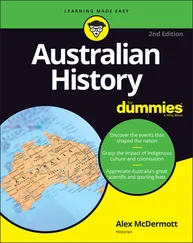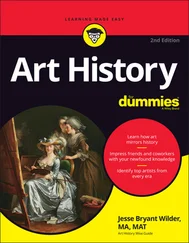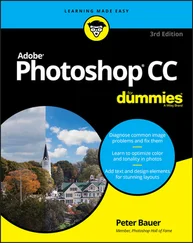Peter Haugen - World History For Dummies
Здесь есть возможность читать онлайн «Peter Haugen - World History For Dummies» — ознакомительный отрывок электронной книги совершенно бесплатно, а после прочтения отрывка купить полную версию. В некоторых случаях можно слушать аудио, скачать через торрент в формате fb2 и присутствует краткое содержание. Жанр: unrecognised, на английском языке. Описание произведения, (предисловие) а так же отзывы посетителей доступны на портале библиотеки ЛибКат.
- Название:World History For Dummies
- Автор:
- Жанр:
- Год:неизвестен
- ISBN:нет данных
- Рейтинг книги:3 / 5. Голосов: 1
-
Избранное:Добавить в избранное
- Отзывы:
-
Ваша оценка:
- 60
- 1
- 2
- 3
- 4
- 5
World History For Dummies: краткое содержание, описание и аннотация
Предлагаем к чтению аннотацию, описание, краткое содержание или предисловие (зависит от того, что написал сам автор книги «World History For Dummies»). Если вы не нашли необходимую информацию о книге — напишите в комментариях, мы постараемся отыскать её.
World History For Dummies,
For Dummies
World History For Dummies
World History For Dummies — читать онлайн ознакомительный отрывок
Ниже представлен текст книги, разбитый по страницам. Система сохранения места последней прочитанной страницы, позволяет с удобством читать онлайн бесплатно книгу «World History For Dummies», без необходимости каждый раз заново искать на чём Вы остановились. Поставьте закладку, и сможете в любой момент перейти на страницу, на которой закончили чтение.
Интервал:
Закладка:
 The Warning icon tells you to watch out! In considering history, it’s especially important not to assume, to keep an open mind, and to set preconceptions aside.
The Warning icon tells you to watch out! In considering history, it’s especially important not to assume, to keep an open mind, and to set preconceptions aside.
Beyond the Book
In addition to the abundance of information and guidance related to world history that you can find in this book, you can get access to even more help and information at Dummies.com . Check out this book’s online Cheat Sheet. Just go to www.dummies.com and search for “World History For Dummies Cheat Sheet.”
Where to Go from Here
You can start with Chapter 1and read to the end, but that’s not required. A great thing about this book is that it’s organized so that you can jump in any place you want. As you page through and browse, note that you can look at the same era from different perspectives. Part 3, for example, tells you how philosophy and religion shaped history; there, you can find out about the religious wars that followed the Protestant Reformation. But if you’re more interested in the weaponry and strategies of war, jump to Part 4. And if you just want to browse the bios of some historical all-stars, check out Part 5. Not sure what you’re looking for? Part 1is a good place to get a general feel for history. The table of contents and index, along with the part summaries earlier in this introduction, should get you to the pages you need.
Part 1
Getting into History
IN THIS PART …
Follow the threads of cause and effect that weave through every part of human experience. If you want to know how things got to be the way they are today, look to yesterday.
See how myths and artifacts — such as the ruins of once-great cities and even the preserved remains of our ancestors — provide wonderful clues to the realities of the ancient world and the beginnings of what we call history.
Put history and its personalities into perspective and wrap your head around how long humans have been doing a lot of the same things people do today: buying, selling, cooking, falling in love, traveling, and fighting wars.
Chapter 1
Tracing a Path to the Present
IN THIS CHAPTER
 Pondering how the past shaped the present
Pondering how the past shaped the present
 Thinking about humankind’s remarkable journey
Thinking about humankind’s remarkable journey
 Tracing a tapestry of historical threads
Tracing a tapestry of historical threads
Just two decades into the 21st century, humanity hit a speed bump, in the form of a pandemic. The pandemic was a new viral disease — relatively benign in many patients but deadly in others and wildly unpredictable. Because it was new to our species, nobody had a ready immune response. Highly contagious, it spread rapidly around the world. Immunologists, the scientists who are experts at these things, had to figure out how to fight the disease on the fly.
The World Health Organization called the virus SARS-CoV-2, for severe acute respiratory syndrome coronavirus, version 2 (after a predecessor in 2003). It called the sickness COVID-19, for coronavirus disease 2019, the year it was identified.
The nature of the threat and how it should be dealt with sparked worldwide debate. Some governments took quick, decisive action to contain it, while others decided to go more slowly. The latter approach proved to be ineffective as infection rates soared.
Another point of discussion was why the world was caught unprepared. “Public health experts have predicted we’d be hit by another pandemic for decades,” puffed the pundits. “Why didn’t leadership have a plan?” asked the journalists. “Why the heck didn’t anybody see this coming?” queried podcasters. “It’s all a hoax!” screamed too many conspiracy theorists.
The pandemic changed the world. According to Johns Hopkins University, it killed more than 4 million people worldwide by the middle of 2021, with case rates rising again. It stalled the world economy and influenced the way people did their jobs, as well as where and how they chose to live.
But this book isn’t about a 21st-century pandemic any more than it’s about the bubonic plague that ravaged Europe and Asia in the 14th century. It isn’t about modern epidemiology or economics, either. It’s about two broader questions: “How did things get to be like this?” and “Why is the world as it is?”
There have been too many years of human activity on this planet — too many lives lived, too many diseases, technological breakthroughs, migrations, wars, murders, weddings, coronations, revolutions, recessions, natural disasters, and financial meltdowns — to trace humanity’s route simply. Too many historians have interpreted events in too many contradictory ways. But what I hope you find in this book is a general view of how human history has gotten you and the world you live in to current reality. To this. To now.
Firing Up the WABAC Machine
If you care about classic TV cartoons, you’ve heard of the WABAC Machine. Pronounced “way back,” the machine was a fictional time-traveling device built and operated by a genius dog named Mr. Peabody. In every episode of the 1960s animated series Rocky and His Friends , the professorial pooch and his pet boy, Sherman, transported themselves to a historical setting — say, ancient Rome, revolutionary America, or medieval England — where they interacted with famous people and solved whatever ridiculously absurd dilemma was troubling cartoon Julius Caesar, George Washington, or King Arthur. Thus, Mr. Peabody and Sherman allowed the events we think of as history to take their proper course.
These episodes spoofed a classic science-fiction premise. Storytellers often use time travel as a plot device. American novelist Mark Twain did it in 1889 with A Connecticut Yankee in King Arthur’s Court . England’s H.G. Wells followed suit in 1895 with The Time Machine , although he sent his protagonist (identified only as “the Time Traveller”) into the future. Other examples include British TV’s numerous incarnations of Doctor Who to hundreds of novels, graphic novels, plays, films, and videogames.
Often, these stories involve someone going back in time to change something in the present or to prevent the present from being changed in some fashion that will cause a future catastrophe. One tiny interference in the “time continuum,” as it’s often called, can lead to a monumentally altered chain of events.
Nobody can do that, of course.
 You can, however, understand more about the present if you time travel in your head — that is, think about the ways that yesterday’s events shaped today. You can ponder how what happened a decade ago shapes this year and how a single change somewhere in the past could have made today different. Historians scoff at the “what if” game, but it’s a tool for getting your head into history.
You can, however, understand more about the present if you time travel in your head — that is, think about the ways that yesterday’s events shaped today. You can ponder how what happened a decade ago shapes this year and how a single change somewhere in the past could have made today different. Historians scoff at the “what if” game, but it’s a tool for getting your head into history.
What if incumbent Donald Trump had won the 2020 U.S. presidential election instead of challenger Joe Biden? Would an angry mob have attacked the U.S. Capitol the following January? How different would American politics have been? How about if voters in the United Kingdom had not chosen, in a 2016 referendum, to withdraw that nation from the European Union? Would that nation’s banks or fishing industry be better off or worse today? What about its people?
Читать дальшеИнтервал:
Закладка:
Похожие книги на «World History For Dummies»
Представляем Вашему вниманию похожие книги на «World History For Dummies» списком для выбора. Мы отобрали схожую по названию и смыслу литературу в надежде предоставить читателям больше вариантов отыскать новые, интересные, ещё непрочитанные произведения.
Обсуждение, отзывы о книге «World History For Dummies» и просто собственные мнения читателей. Оставьте ваши комментарии, напишите, что Вы думаете о произведении, его смысле или главных героях. Укажите что конкретно понравилось, а что нет, и почему Вы так считаете.












